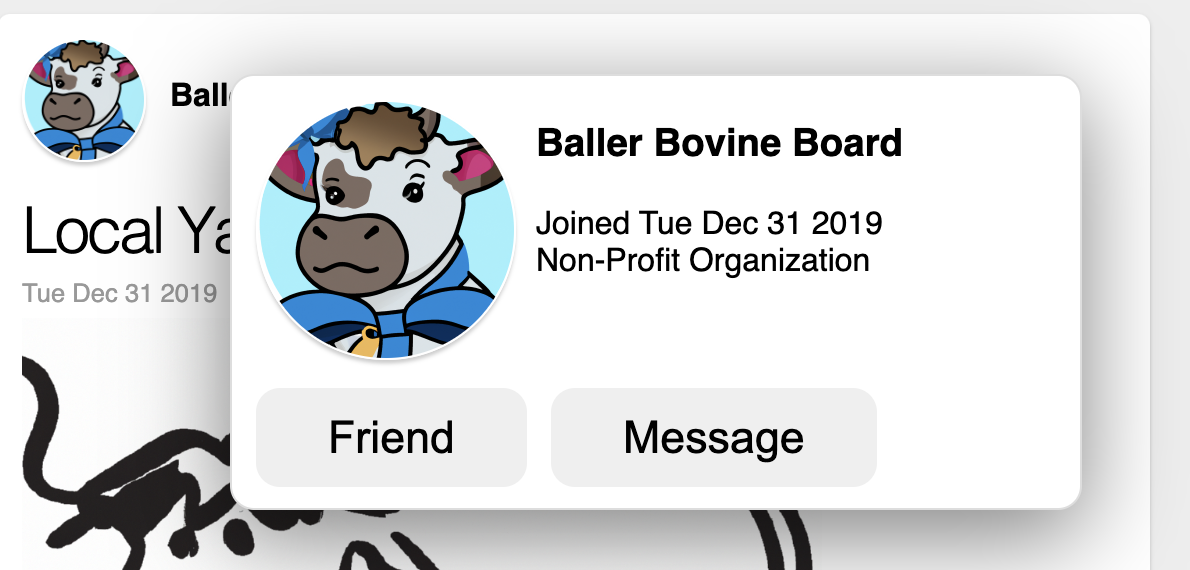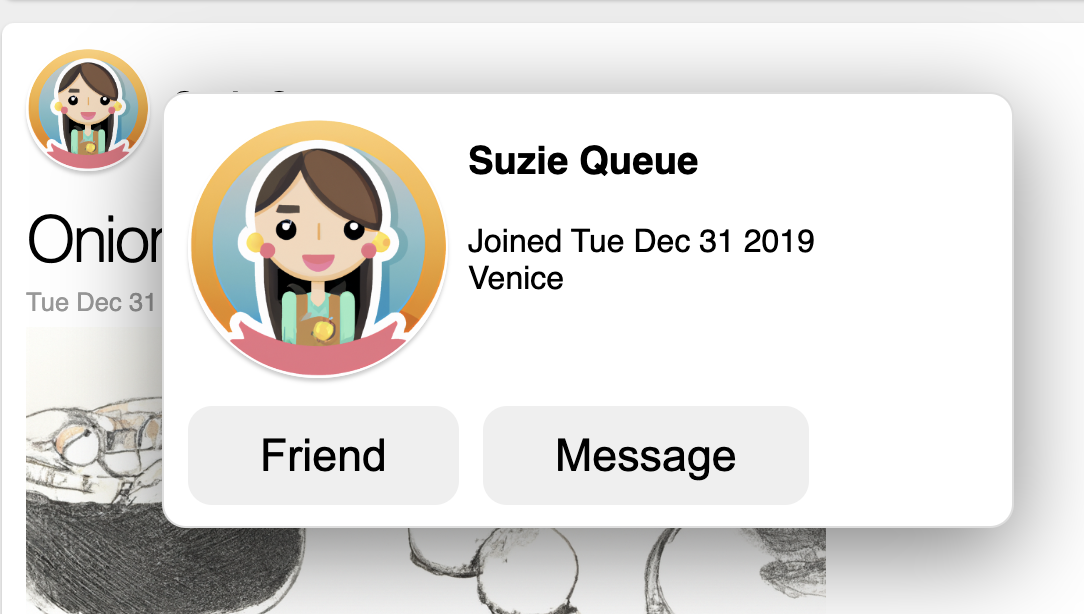GraphQL Types, Interfaces, and Polymorphism
In this section, we’ll see how to treat different types of nodes differently. You might notice that some of the newsfeed stories in the example app are posted by people, while others are posted by organizations. In this example, we'll enhance our hovercard by writing a fragment that selects people-specific information about people and organization-specific information about organizations.
We’ve alluded to the fact that GraphQL nodes aren’t just random bags of fields — they have types. Your GraphQL schema defines what fields each type has. For instance, it might define the Story type like this:
type Story {
id: ID!
title: String
summary: String
createdAt: Date
poster: Actor
image: Image
}
Here, some of the fields are scalars (like String and ID). Others are types defined elsewhere in the schema, like Image — these fields are edges to nodes of those specific types. The ! on ID! means that field is non-nullable. In GraphQL, fields are normally nullable and non-nullability is the exception.
Fragments are always “on” a particular type. In our example above, StoryFragment is defined on Story. This means that you can only spread it into places in a query where a Story node is expected. And it means that the fragment can select just those fields that exist on the Story type.
Of particular interest is the Actor type used for the poster field. This type is an interface. That means that the poster of a story can be a Person, a Page, an Organization, or any other type of entity that meets the specifications for being an “Actor”.
The GraphQL schema in our example app defines an Actor as follows:
interface Actor {
name: String
profilePicture: Image
joined: DateTime
}
Not coincidentally this is exactly the information that we’re displaying here. There are two types in the schema that implement Actor, meaning that they include all the fields defined in Actor and declare as such:
type Person implements Actor {
id: ID!
name: String
profilePicture: Image
joined: DateTime
email: String
location: Location
}
type Organization implements Actor {
id: ID!
name: String
profilePicture: Image
joined: DateTime
organizationKind: OrganizationKind
}
Both of these types have name , profilePicture, and joined, so they can both declare that they implement Actor and thus can be used wherever an Actor is called for in the schema and in fragments. They also have other fields that are distinct to each particular type.
Let’s see how to work with interfaces more by extending the PosterDetailsHovercardContentsBody component to display the location of a Person or the organization kind of an Organization. These are fields that are only present on those specific types, not on the Actor interface.
Right now, if you’ve followed along so far, it should have a fragment defined like this (in PosterDetailsHovercardContents.tsx):
fragment PosterDetailsHovercardContentsBodyFragment on Actor {
name
joined
profilePicture {
...ImageFragment
}
}
If you try to add a field like organizationKind to this fragment, you’ll get an error from the Relay compiler:
✖︎ The type `Actor` has no field organizationKind
This is because when we define a fragment as being on an interface, we can only use fields from that interface. To use fields from a specific type that implements the interface, we use a type refinement to tell GraphQL we’re selecting fields from that type:
fragment PosterDetailsHovercardContentsBodyFragment on Actor {
name
joined
profilePicture {
...ImageFragment
}
... on Organization {
organizationKind
}
}
Go ahead and add this now. You can also add a type refinement for Person:
fragment PosterDetailsHovercardContentsBodyFragment on Actor {
name
joined
profilePicture {
...ImageFragment
}
... on Organization {
organizationKind
}
... on Person {
location {
name
}
}
}
When you select a field that’s only present on some of the types that implement an interface, and the node you’re dealing with is of a different type, then you simply get null for the value of that field when you read it out. With that in mind, we can modify the PosterDetailsHovercardContentsBody component to show the location of people and organization kind of organizations:
import OrganizationKind from './OrganizationKind';
function PosterDetailsHovercardContentsBody({ poster }: Props): React.ReactElement {
const data = useFragment(PosterDetailsHovercardContentsBodyFragment, poster);
return (
<>
<Image image={data.profilePicture} width={128} height={128} className="posterHovercard__image" />
<div className="posterHovercard__name">{data.name}</div>
<ul className="posterHovercard__details">
<li>Joined <Timestamp time={poster.joined} /></li>
{data.location != null && (
<li>{data.location.name}</li>
)}
{data.organizationKind != null && (
<li><OrganizationKind kind={data.organizationKind} /></li>
)}
</ul>
</>
);
}
You should now see the location of people, and the organization kind for organizations:


By the way, we can now understand why we had ... on Actor in the example earlier. The node field can return a node of any type because any ID could be given at runtime. So the type that it gives us is Node, a very generic interface that can be implemented by anything that has an id field. We needed a type refinement to use fields from the Actor interface.
In the GraphQL spec and other sources, type refinements are called inline fragments. We call them “type refinements” instead because this terminology is more descriptive and less confusing.
If you need to do something totally different depending on what type it is, you can select a field called __typename, which returns a string with the name of the concrete type that you got (e.g., "Person" or "Organization"). This is a built-in feature of GraphQL.
Summary
The ... on Type {} syntax allows us to select fields that are only present in a specific type that implements an interface.